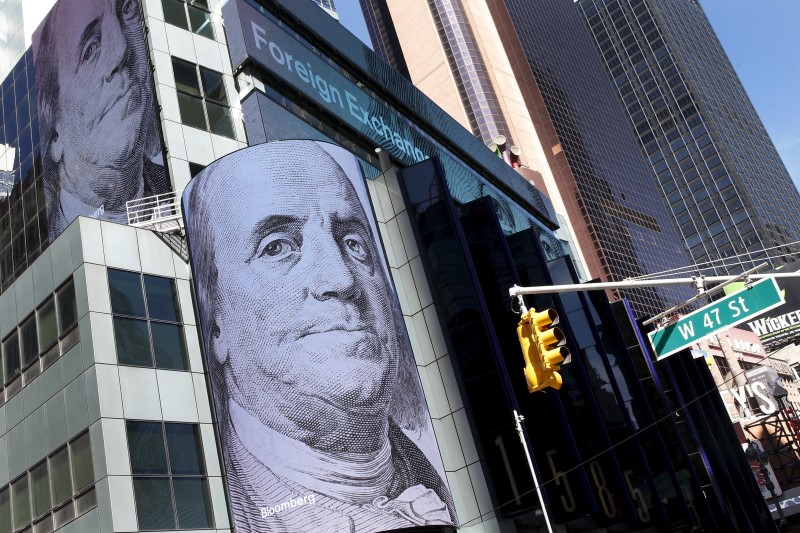Investing.com - The dollar was trading close to two-week highs against a basket of its major peers on Thursday after the Federal Reserve raised U.S. interest rates for the first time in a almost a decade.
The U.S. dollar index, which measures the greenback’s strength against a trade-weighted basket of six major currencies, was at 98.76, after hitting highs of 99.00 overnight, the most since December 3.
The Fed raised the target for the fed-funds rate to a range of 0.25% to 0.50% from close to zero, where it has been held since December 2008.
The monetary tightening comes as other world central banks are easing policy and reflects confidence in the world’s largest economy. Higher interest rates also make the dollar more attractive to yield-seeking investors.
The Fed signaled the pace of future increases would be gradual and will depend on how the inflation outlook evolves.
The euro fell to more than one-week lows, with EUR/USD down 0.49% to 1.0858.
The safe haven yen and Swiss franc were lower, with USD/JPY edging up 0.13% to 122.37 and USD/CHF advancing 0.54% to 0.9955.
The pound was also weaker, with GBP/USD down 0.47% to 1.4929, not far from last week’s eight-month lows of 1.4893.
Sterling remained under pressure after the latest U.K. jobs report on Wednesday showed a sharp slowdown in wage growth in November, prompting investors to push back expectations on the timing of a rate hike by the Bank of England.
The commodity linked currencies were also broadly lower, reflecting continued weakness in oil prices.
AUD/USD was down 0.45% to 0.7197 and NZD/USD fell 0.74% to 0.6747.
The Canadian dollar was close to 11-year lows, with USD/CAD at 1.3807.
